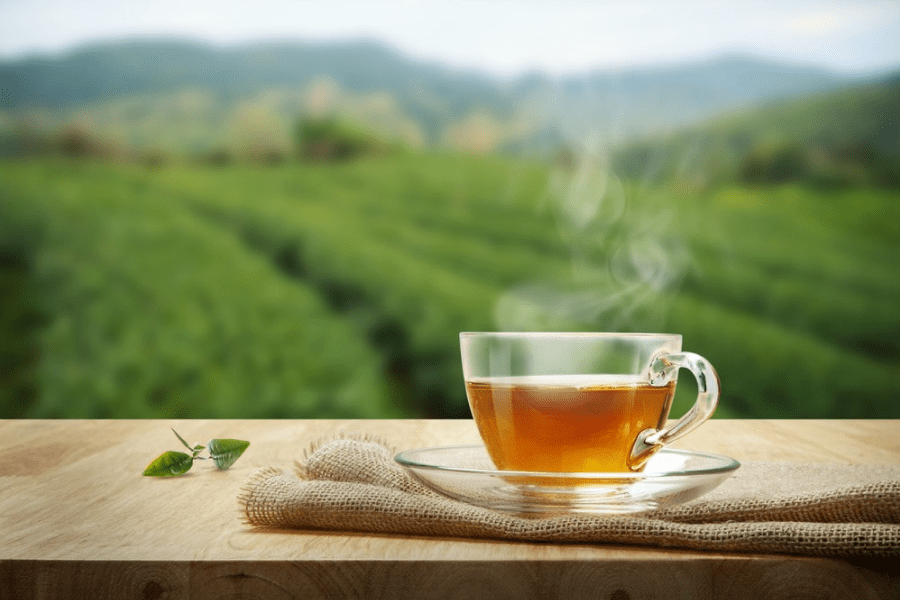India should have its own firm MRL standards for imports
Krishnendu Chatterjee, Sr. VP – Centre of Excellence at Darjeeling Organic Tea Estates Pvt. Ltd (DOTEPL), explains how Indian organic food producers are also facing MRL challenges in markets like EU, even though these may largely on account of environmental factors.
This calls for a better understanding among the scientific community and regulators across markets on the actual reasons for these trace detections, besides the viability of having such stringent norms. At the same time, FSSAI needs to expand its chemical list and India should assert its right to have stringent standards for imported products.

On the surface, the topic of maximum residue limits does not seem relevant to organic products, as there are no chemicals involved in the production process. At Darjeeling Organic Tea Estates Private Limited (DOTEPL), we are dealing with 100% organic products produced in our tea estates. We have 17 of them in Assam and Darjeeling and they’re all certified in multiple organic standards since many years. But if you analyse closely, the issue and challenges of MRLs go much deeper.
One needs to understand that most of the chemicals used commonly in agriculture are persistent in their derivatives; derivatives are nagging and keep on coming back in harvest even after years of use, albeit in trace quantities. For example, a herbicide called Glyphosate (‘Roundup’ is the commonest trade name) once applied, may either come back in harvest in its original form or in other derivatives like AMPA (amino-methyl-propionic acid).
You cannot always be sure that a chemical will becomes harmless upon degradation. We have found that upon degradation, there can be more harmful chemical regeneration. So, hypothetically if you are using Glyphosate in 2020, it may well happen that in 2029 or so, your product may suddenly contain traces of Glyphosate or AMPA. And AMPA is probably more harmful than glyphosate itself.
Similarly, there are many organochlorines, organophosphates that degrade and resultants are often more harmful than the original molecule itself. Herbicide and pesticide companies claim that these are not photo resistant and can degrade quickly. But they don’t talk about what happens after depletion.
If chemists and food technologists analyse, there are many examples of how harmful chemical molecules have degraded in the environment or soil to produce a more harmful chemical or its agent. Degradation of molecules largely depends on its structure, soil- composition, ambient temperature and seasonal traits.
So, in my capacity, I may regard myself to be an organic producer, as well as a very reasonable and honest administrator. But that doesn’t guarantee that my product would always have zero residues or the desired residue levels. As such, there is nothing called organic MRLs, but it is expected that nothing beyond 0.01 mg/kg (detectable limit) will ever be detected in organic products. Scientific committees taking these decisions understand that organic products cannot have any chemical contaminations to be detectable beyond 0.01 mg/kg.
Now, say for tea, generally we have to pluck around four and half kg of green-leaves to make one kilogram of tea. The findings of the laboratory after testing the ready tea have to be divided by 4.5 (conversion factor) to arrive at what magnitude of a chemical is found or, if at all, has been directly used in the tea. So, based on this logic and after applying the error factor (MU- measurement of uncertainty in the labs), the lab testing is done to arrive at a conclusion. This is one big chapter consisting of highly debatable provisions.
Another major issue across the world is environmental pollution like AQ (Anthraquinone), BP (Biphenyl), PAH (Polycyclic aromatic hydrocarbons), Nicotine etc. For example, one would reckon that nicotine only comes from direct use of tobacco plants in different forms like chewing tobacco or smoking cigarettes or bidi. Nicotine, however, exists any many other plants, especially in Solanaceae (potato, brinjal) where it in its avatar of secondary metabolite repels external predators.
You have to understand that nicotine does not only come from smoking or chewing tobacco or the people who handle these. If a person has smoked or chewed tobacco right before handling the tea plants with bare hands, the nicotine will definitely transfer to the plants. But the issue is that even the consumption of tobacco-based products by few food handlers might not lead to the high level of Nicotine contamination (60mg/kg of Nicotine which happens to be the acceptable limit in EU for Tea).
We have done enough studies to ascertain that nicotine is already present in the air specially in polluting cities, areas of construction and tarmacking of roads, where coal is burnt profusely etc. Dust particles are often highly hygroscopic and environmental suspended lipid particles combines with dust absorb Nicotine profusely.
In tea factories, lot of dust particles are generated during production (fluffs) thus tend to pick up Nicotine from air to contaminate tea. Smallest of the particles do have proportionally higher surface areas and it implies tiniest of dust particles are even more threatening.
There has been research on this all around the world. We haven’t seen the end of the tunnel. In one Japanese magazine, scientists claimed that when tea trees are under stress, they can produce nicotine as a secondary metabolite to protect them from external pests.
So, we haven’t understood the full story behind this, but we know that nicotine is environmental and habitual. It can come from different weeds and sources. So, it will be unfair to blame the producers. That is why today acceptable nicotine levels for tea is set at a reasonable value of 60 mg per kg. EU was discussing about reducing the limit to 10 mg per kg, at one time, which has now been kept in abeyance.
I was in Germany in 2015 and happened to go through one of its leading Food Magazine. It came out on frontline news that Darjeeling Tea is full of poison. This was a very bold and most damaging statement that would have affected customer sentiment in Germany, where Darjeeling Tea is sold at very good prices.
Basically, they were talking about AQ contamination. Anthraquinone is a big issue in the EU market. People don’t mind the presence of AQ in baked beans and roasted chicken. But they are surprisingly very finicky if they find it present in tea. Basically, anything that you eat, which is roasted or baked very deeply – even pizzas and tandoori chicken – can contain AQ.
Mind you, AQ since is not aqua soluble, cannot migrate to your cups from dried leaves whereas, you are consuming AQ directly as you are relishing golden fried pizzas. In tea, AQ has been limited to 0.02 mg/kg.
Now, nobody uses AQ as a pesticide, though it was used as a bird repellent many years back. But this AQ keeps coming back to tea, purely because of environmental issues.
One polycyclic aromatic hydrocarbon called Anthracin, found abundant in polluting environment (in cities where emissions are at peak due to transportation, factory emissions, construction of roads etc.) often gets oxidised under high pressure and temperature to AQ. It can also be formed during partial combustion of coal/ diesel/ petrol. While burning, coal produces millions of chemical molecules, which may be transitional but are extremely harmful to health. AQ is a by-product of coal burning or of anything that is burnt partially. So, the periphery of subject understanding is much vaster. Discussions on issues of AQ, Phthalates or polycyclic aromatic hydrocarbons should cover more than just chemical analysis.
To site yet another instance, there was a time when the definition of Folpet was revised by the European Union. Folpet is a fungicide which is sometime used by the conventional producers and presence of which should normally be unexpected on Organic produce. EU decided to define Folpet as Folpet + Phthalimide (PI) which is an organic environmental pollutant. After much lobbying and persuasion, we have been able to sort the issue in 2018– now Folpet is seen as an agro-chemical and PI is attributed as enviro-pollutant. So, you have to continuously look at the limits of pollutants and how they’re approaching them.
If you analyse any conventional product, there will be many numbers of chemicals. But in organic products, occasionally there might be a couple of detections in absolute traces. But as pointed out, that doesn’t always mean that the detections are result of any direct use of the chemicals.
And it also depends on the degree of degradation, type of soil, moisture, highland or lowland, etc. But the topic, which remain in consideration are environmental pollutants. These are organic molecules which would be there and will keep disturbing us. So, in my company, I have my own researchers for in-house detections and advances on environmental pollutants.
I am not actually worried about Indian legislations because what FSSAI is doing is all right and they must continue it. As a producer of organic tea, I don’t feel threatened by the reforms that Indian Government is bringing out. My issue is that the European Commission doesn’t understand the perspective of Indian standards.
India follows EU norms (Indian Organic production protocol as defined by NPOP is equivalent to EU regulations) but there are also differences between EU norms and FSSAI norms. FSSAI unfortunately, does not list out all the molecules that can be detected, because it has a list of only 228 chemicals which are tested. But when I test products for exports to Germany or other EU countries, the overseas labs are testing for 548 molecules.
In a laboratory, if you have to detect a chemical, you must have that chemical in your stock to compare. A chemical ‘x’ which is there in Germany but not in India, cannot be compared, as it is never available in India. So, any incoming goods with chemical ‘x’ can get into India easily. I do not know whether they have recently extended their horizon, but they were talking about only 228 chemicals at one time.
The Indian government should look into this, because when we export our products, we are exposed to the most stringent detection procedures. And we think that since we are a third world country or a developing country, we have to go through this. But India since is one of the largest consumer markets, has the right to put forward its own standards and that should be as broad as possible. No country should be able to get away with sending below quality products to India.

Krishnendu Chatterjee is Sr. Vice President- Centre of Excellence at Darjeeling Organic Tea Estates Pvt. Ltd. He is a professional agriculturist who has been a tea planter for 27 years. His focus areas are organic production and marketing and he has been practicing biodynamic agriculture for 18 years. Mr Chatterjee is also a trained food-safety expert, and his other roles include Co2e- auditor, Lead auditor- QC and Sustainability Head.













Leave a comment